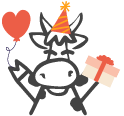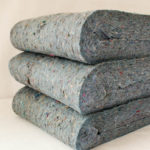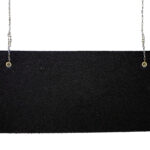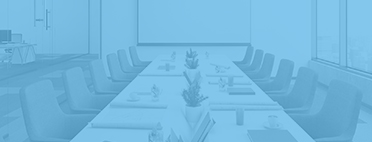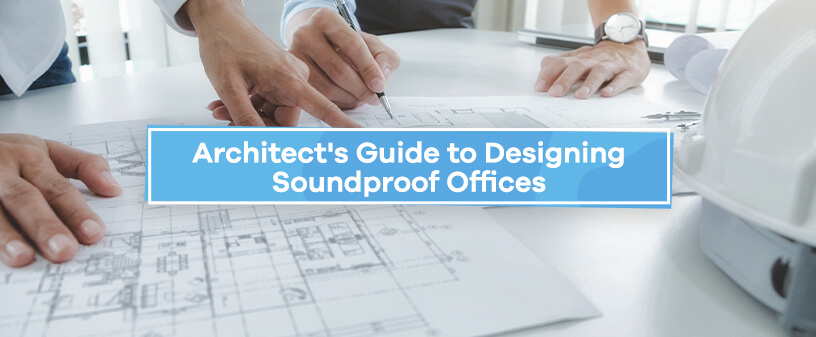
Soundproofing is crucial for office spaces. People want to work in quiet, calm areas where they have the privacy to discuss important matters without worrying if their co-workers can hear them in the nearby cubicles. They also want to clearly hear presenters in the conference room without noise interference or poor acoustics.
Don’t let soundproofing be an afterthought of your office plans. As an architect, you’ll want to incorporate acoustics into the design and construction processes for the best results possible.
We are breaking it all down in this architect’s guide to soundproof offices.
What to Consider When Designing Soundproof Offices
Acoustic design is a vital part of planning and constructing office spaces. The key is to tackle your soundproofing needs while in the design phase.
Working with an acoustical consultant during the design phase can be highly beneficial. They will help you develop a sound profile that will allow those working in the offices to enjoy the greatest auditory experience possible.
While designing the space, consider your sound specifications, such as:
- Maximum sound penetration.
- Maximum decibel level.
- HVAC duct locations.
- Customized ceiling shapes.
Include all of your specifications on your construction documentation to ensure the contractors you work with are on the same page and know exactly what materials to use.
Perform regular site visits during construction to ensure the proper installation of all the soundproofing materials. Your acoustic consultant can assist you throughout the building process.
3 Elements of Architectural Acoustic Design
While an acoustic consultant can help you understand the principles of soundproofing, it can be advantageous to familiarize yourself with the three elements of architectural acoustic design:
- Absorption: Materials that absorb noises, such as acoustic panels or soundproofing insulation, can help minimize unwanted sounds from traveling through the office space. The material traps soundwaves, making them less powerful when they reflect back into a room.
- Diffusion: Sound diffusion helps improve the way sounds carry throughout a space. Including diffusion materials in an office’s design is highly important if the space includes conference rooms or speaker systems where people need to hear audio from various distances and locations.
- Reflection: Considering noise reflection is essential in offices because they tend to have a lot of hard, flat surfaces that can generate unwanted echoes and reverberation. Both of these phenomena contribute to unpleasant and unwanted noise pollution. Incorporating absorbent materials is key to minimizing sound reflections in a workspace.

How Soundproofing in Offices Is Measured
The effectiveness of soundproofing materials can be measured using a sound transmission class (STC) rating. The rating will help you determine how well the office’s foundation transmits noise.
Different materials and compositions will have different STC ratings. For example, you would likely be able to hear someone talking on the other side of a thin wall that has an STC rating of 25. If you added layers of soundproof insulation to the same wall, you could achieve an STC rating of 40 and muffle the sound almost completely.
The American Society for Testing and Materials (ASTM) designates particular STC measurement standards for soundproofing materials.
To calculate a material’s STC rating, you would use an audiometer to record the decibels in a space where a specific frequency is being generated. Then, record the decibels from the same sound in an adjacent room or space. Subtract the second number from the first to find the total transmission loss.
Repeat this process to test how different frequencies travel throughout your office space. The general rule of thumb is to record the results for 16 frequencies between 125 hertz and 4,000 hertz. After testing these sounds, you’ll determine the average transmission losses and discover the office’s STC rating.
Best Ways to Soundproof Offices During Construction
An effective soundproof office design involves various different factors. We are sharing the best materials and ways to incorporate acoustics and noise control into the building process.
Soundproofing Walls
When soundproofing an office space, you’ll want to address the walls and ensure they have the appropriate STC rating. Whether your aim is to reduce noise from room to room or block out racket from outside the building, there are some go-to soundproofing solutions.
Soundproofing insulation is the most common material for reducing noise transmission through office walls. Contractors can install these materials the same way they would traditional insulation.
Another great option for soundproofing walls is sound isolation rails. They attach to the wall’s studs and effectively absorb vibrations and sound waves before they pass through the wall.
Soundproofing Doors and Windows
Along with office walls, you’ll also want to consider soundproofing solutions for doors and windows.
Door seals and sweeps can help block outside noises from entering the office space. Door sweeps are made of a thick, dense rubber that effectively interrupts sound transmission.
Windows tend to be a pain point for soundproofing. However, choosing the right type of glass allows you to enjoy less noise. Laminated windows are a great option for sound reduction purposes.
Soundproofing Floors
If you are building a multistory office building, it is essential to incorporate floor soundproofing materials.
Installing flooring underlayments can help to dampen footsteps and reduce noise transfer between different floors. They can be installed under various materials, including laminate, tile and hardwood.
Another popular floor soundproofing solution is to install floor joist isolators. These materials go on individual floor studs and decouple the studs from the building’s foundation.
Floor joist isolators are an effective solution for reducing low-frequency sounds passing from floor to floor.
Soundproofing Ceilings
Many materials and techniques for soundproofing walls are also used for ceilings, such as acoustic insulation.
Other solutions for soundproofing ceilings include:
- Joist isolators: Installing joist isolators when constructing a new ceiling is a great way to add padding where the drywall and joist connect.
- Mass-loaded vinyl (MLV): You can also incorporate MLV sheets during the ceiling installation process to muffle and block sounds.
- Hanging baffles: Consider installing hanging baffles from the ceiling to improve sound quality and minimize the reflection of unwanted noises.
Purchase Soundproofing Materials From Soundproof Cow
If you are looking for high-quality soundproofing materials for designing a quiet office space, turn to Soundproof Cow. We offer a wide range of products to help you find the right noise-dampening solutions for your building project.
With our sound isolation systems, you can design a space that offers peace and privacy for those at work. Our team is here to help you determine what soundproofing materials your application requires and how to create the most noise-free environment for your clients.
Are you ready to get started? Browse soundproofing materials from Soundproof Cow today!
